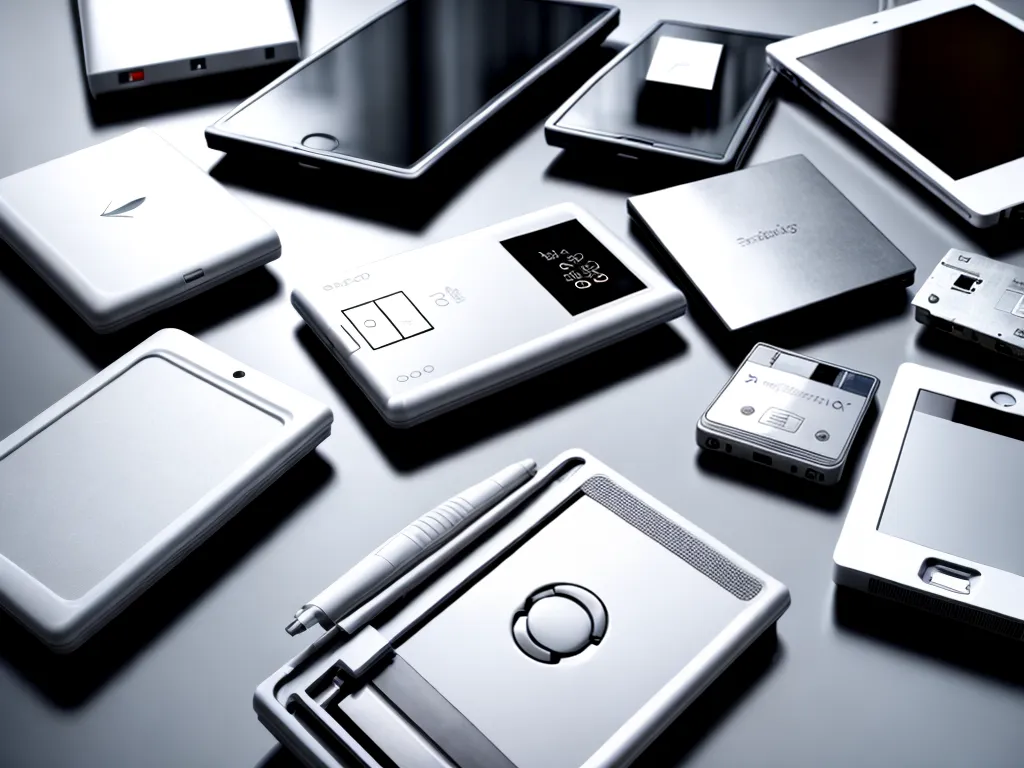Why Proper Disposal is Important
Improperly disposing of digital storage devices like hard drives, flash drives, and SD cards can lead to identity theft and the exposure of sensitive personal information. When you delete files from these devices, the data is not completely erased. Someone can recover deleted files using data recovery software. That’s why it’s essential to safely wipe or destroy the device when disposing of it.
Main Risks of Improper Disposal
-
Identity theft – Hard drives often contain sensitive information like social security numbers, bank account details, and login credentials that identity thieves can use to steal your identity.
-
Financial fraud – Outdated financial documents on discarded devices can enable fraudsters to access bank accounts, credit cards, and other assets.
-
Security breaches – Businesses that improperly dispose of hardware may expose customer data, intellectual property, and other confidential information.
-
Compliance violations – Failing to properly erase sensitive data can cause organizations to violate data protection laws like HIPAA and GDPR.
My Personal Experience with Data Recovery
I once purchased a used laptop online that still had the previous owner’s data on it. Using recovery software, I was able to access their tax returns, medical records, and other sensitive information. This experience taught me the importance of properly wiping devices before disposing of them. Leaving personal data on old devices puts previous owners at risk of fraud and identity theft.
How to Securely Erase a Hard Drive
Erasing the hard drive is the best way to ensure no data can be recovered when disposing of a computer or external hard drive. Here are some methods to securely erase a hard drive:
Use Disk Utility on Mac
The macOS Disk Utility includes a secure erase option that overwrites a drive’s data with zeroes. To use it:
- Open Disk Utility
- Select the external drive you want to erase
- Click Erase
- Choose Mac OS Extended as the format
- Select Secure Erase to overwrite data with zeroes
- Click Erase to wipe the drive
This process may take several hours depending on the size of the drive.
Use Parted Magic on Windows
Parted Magic is a Linux-based bootable CD/USB that includes hdparm, a utility for securely erasing drives. To use it:
- Download Parted Magic ISO file
- Create a bootable CD or USB drive
- Boot computer from Parted Magic media
- Use the hdparm tool to overwrite the hard drive with zeroes:
hdparm --user-master u --security-erase NULL /dev/sdX
This will wipe the entire drive. Be very careful to choose the correct drive.
Physically Destroy the Drive
For ultimate peace of mind, you can physically destroy the hard drive. Methods include:
- Using a drill or hammer to poke holes in the platters
- Degaussing to scramble the drive’s magnetic fields
- Disk shredding or grinding up the drive
Though labor-intensive, physical destruction ensures no data can ever be recovered.
How to Securely Erase USB Flash Drives and SD Cards
Flash drives and SD cards can also retain leftover data. Here are some ways to securely erase them:
Use Diskpart on Windows
Diskpart is a command-line utility included in Windows that can overwrite an external drive. To use it:
- Plug in the flash drive or SD card
- Open the Command Prompt as admin
- Type
diskpart - Type
list diskto identify the correct drive - Type
select disk X(replace X with your drive number) - Type
cleanto perform a quick erase by overwriting data with zeroes
Use diskutil on Mac
The diskutil utility included with macOS can wipe external drives. To use it:
- Plug in the flash drive or SD card
- Open the Terminal app
- Type
diskutil listto identify the correct drive - Type
diskutil eraseDisk JHFS+ NAME MBOFlashDrive(replace NAME with what you want to label the drive as)
This will completely erase the drive with a single pass zero overwrite.
Use Third-Party Erasing Tools
Software like DBAN (Darik’s Boot and Nuke) and Eraser allow you to securely erase external drives by overwriting data multiple times. These tools work on Windows and are free to download. Just make sure you select the correct drive before wiping it.
Destroy the Device Physically
As with hard drives, physically destroying flash drives and SD cards ensures no data can be recovered. You can damage the chips using a hammer or snip the circuit board into pieces.
Securely Erasing Smartphones and Tablets
Smart devices like phones and tablets also have options to perform a factory reset or wipe before disposal:
- iPhone – Go to Settings > General > Reset > Erase All Content and Settings
- Android – Under Settings look for Factory Data Reset or Erase All Data
- Windows Phone – Go to Settings > About > Reset your phone
Alternatively, you can remove and destroy the flash storage chip inside the device using special tools.
Safely Disposing of Storage Devices
Once you’ve securely erased your digital storage devices, you can dispose of them through:
-
Recycling – Many stores and community centers accept old electronics to be recycled. Make sure your data is properly wiped first.
-
Donating – Charities like Goodwill may accept external hard drives and flash drives if you safely erase them first.
-
Regular trash – If recycling is not available, you can throw smaller items like SD cards and flash drives in the regular trash after proper erasing. Just be sure to destroy them first if possible.
-
E-waste disposal – Check if your local waste management provides e-waste collection days or drop off locations to dispose of old electronics. Make sure to wipe devices ahead of time.
The key thing is to always wipe storage devices before getting rid of them. With the proper precautions, you can avoid data leaks and prevent identity theft.













